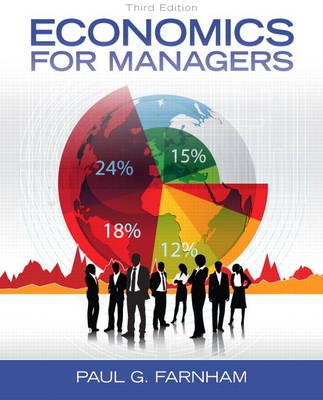
THE ECONOMIC ENVIRONMENT OF BUSINESS
 |
| Spring 2017 |
 |
Graduate (S) Business Administration 509 THE ECONOMIC ENVIRONMENT OF BUSINESS |
|
|
|
| | HOME | SYLLABUS | CALENDAR | ASSIGNMENTS | ABOUT PROF. GIN | |
|
B. Measuring Macroeconomic Activity 1. Gross Domestic Product (GDP)
. . . . . . . . . . (1) Expenditure or output approach
. . (2) Earnings or income approach
. . .
- Monetary measure .
- Sold to end users . . .
- Used products not counted - Products produced but not sold counted - Financial securities transactions not counted .
- Measures production within a country's borders, regardless of who produces the products - Gross National Product (GNP) - market value of final goods and services produced by a nation's resources, regardless of location . . . . . . .
- Flow variable .
- Legal (e.g., housework) and illegal (e.g., drug trafficking), cash economy - Imputed value of some nonmarket transactions included Ex.- Owner-occupied housing . . .
.
. . .
- Natural disasters, wars, environmental disasters counted as increasing GDP . c. Real vs. nominal GDP
. . . . . . . .
. . . . d. Expenditure or output approach
.
.
.
.
.
.
. . . .
.
.
.
. e. Income or earnings approach
(1) Compensation of employees - wages, salaries, beneftis (2) Proprietor's income (3) Rental income (4) Corporate profits (5) Net interest - interest earned minus interest paid . . . . . . . . . . 2. Price level measures
a. Inflation measures (1) GDP Price Deflator . . . (2) Consumer Price Index
(a) Calculation . . . . . . . . . . . (b) Problems with using the CPI i) Substitution bias
. ii) Inadequate treatment of quality changes
. iii) New products not counted . (c) Core rate of inflation
. (3) Producer Price Index
.
. (4) Employment Cost Indexes weighted-average cost of an hour of labor .
. b. Real values
. . . . 3. Measures of employment and unemployment
- Current Population Survey (Household Survey) - monthly survey of 60,000 households to estimate unemployment rate . - Establishment Survey - monthly survey of 160,000 businesses and government agencies from a database of 400,000 existing worksites to estimate employment growth . a. Unemployment rate
.
.
- Excludes people in institutions, children, people in armed forces, those not seeking work (homemakers, students, etc.) - Excludes discouraged workers - people who previously worked but are not currently seeking work because of economic concerns .
. . . . b. Labor force participation rate
. . .
.
|